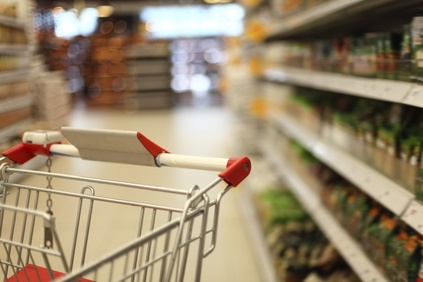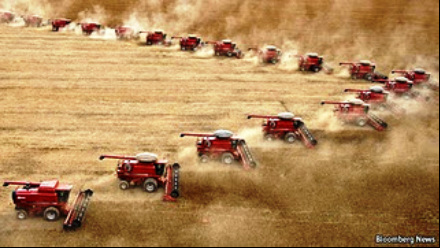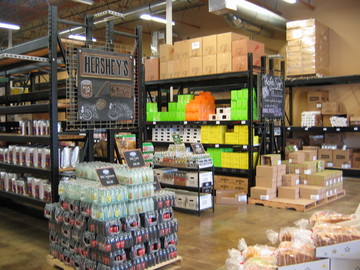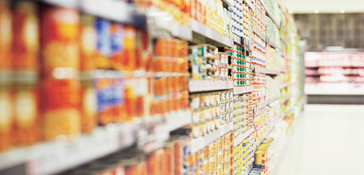 Image From: http://www.ohl.com/industries/consumer-packaged-goods Image From: http://www.ohl.com/industries/consumer-packaged-goods The process of restructuring continuously flows like water down the waterfall of CPGs ( Consumer Packaged Goods), and it washes away some marketing employees at the same time. An example would be Procter and Gamble, where it made the business decision to cut costs. It had a projected $10 billion worth of savings (a billion of that amount would be savings from non-advertising promotional expenses) in a span of half a decade. This move was designed to address the issue of sluggish sales, share losses to competitors, and mediocre earnings. Other packaged consumer goods firms have followed suit, with the likes of Energizer Holdings, Kimberly-Clark, and Colgate-Palmolive coming up with their announcements regarding plans to take away some of their headcount. This is bad news for a lot of staff, since the corporate layoffs will affect more than a thousand people. Going back to P & G, it is not enough that they would lay off some workers from the marketing department and other nonmanufacturing sectors. They even announced that they would continue to take away their labor force overhead by 2 or 4% per year for the following three years. Because P & G is being pressured by investors to cut more costs, the competition is also joining in to maintain their marketing expenses and competitive prices. Now that all of this is happening, the key query is how the marketers will make use of whatever savings they get from reducing their number of employees. Will they invest in innovation and advertising, or will they just step on one another with their never ending price wars? Based on information provided by P & G, they have utilized their packaged consumer goods and restructuring savings for promotional expenses instead of bringing it to the bottom line. They are still experiencing slow growth, so the company might not be able to keep the price gaps that they had before.
 Image From: http://oilprice.com Image From: http://oilprice.com The present worldwide system of food is dependent on transport and fuel. As all the countries of the world continue this “life on the fast lane” lifestyle, fuels are almost bound to become more expensive in the long run. This will make the present, agricultural production system that relies on fuel less secure, and food more costly. Thus, it is mandatory to market a community that is self-sufficient when it comes to food and minimize the need to use fuel in the overall food system. Any grocery exporter with experience will be aware that the link between oil and food is systematic, and the rates of both fuel and food have gone up and gone down more or less in sync during the past few years. Contemporary agriculture makes use of oil items to keep farm machinery going, to transfer farm output to the end user (the customers) or to transfer other products into the farm. Oil is usually employed as input in the chemicals that are used in agriculture. The spikes in oil prices would therefore cause tension on all the factors of industrial food systems. All of these happenings have caused concern that volatile and high crude oil prices may result in the prices of food getting more and more expensive as the days pass. Aside from this, as the oil prices continue to go up, so will the demand for those biofuels (liquid fuels that are not made out of fossils that can serve as substitutes for petroleum products inside motor vehicles and combustion engines). The downside to this is that biofuels are normally created out of different agricultural products such as corn. As the typical grocery exporter will demand a lot out of these substitute fuels (along with other grocery exporters from around the globe), the prices of crops will skyrocket, resulting in food that is less affordable.
 Image From: http://www.philstar.com Image From: http://www.philstar.com The unions of farmers in the Philippines have been complaining about those smugglers who have been taking their livelihood away from them for a long time now, and they are hoping that the government will give them the help and support that they need. What is really going on with the exports and imports of agri-food items in the Philippines? Are trade realities actually reflected by the official statistics? Or are the statistics agencies at fault since they have been under-documenting or under-reporting? This trading in the Philippines post will make use of some trade data from the United Nations which people can view if they visit the UN Trademap. It will talk about the products that are either being imported or exported in this nation. The state of rice imports and exports According to statistical data, the Philippines has brought in an estimated 581,000 tons worth of the staple food from Vietnam during the year 2011. This amount increased the next year when the nation imported 823,000 tons of rice. Vietnam however has not provided any export data for each country since the year 2010. Could the reason for the delay in releasing the export data be something controversial? While this is going on, the USDA (United States Department of Agriculture) released a report about the Philippines bringing in an estimated annual amount of 1.5 million tons of rice, mostly from Vietnam. Why are the reports conflicting? Could the UDSA be making a mistake? During April 2013, the local Customs police discovered a lot of smuggled rice in the city of Cebu. The total worth of the stolen rice inside the 1,169 vats from Vietnam was around P1.2 Billion (or $29 Million). Based on trading in the Philippines statistics, one of these 40 feet storage devices would hold a maximum of 40 tons of rice. The entire volume is approximately 46,760 tons.
 Image From: http://globial.com Image From: http://globial.com What are the factors that will encourage a nation to import or export merchandise? Because the expenses that are associated with manufacturing differ within countries, the same commodities will be distributed for various prices in various locations. A nation exporting or importing their items will depend on the rate that the local manufacturers charge relative to the manufacturers from around the world who produce the same thing. For example, nations such as China will export their textiles because they can manufacture these with fewer expenses and lower rates compared to the rest of the distributor of customer packed goods in the world. On the other hand, nations like the United States will import textiles from China because the American textile manufacturers go through more expenses and therefore charge expensive rates compared to the rest of the world. If you are to observe any number of items that you use every day, like your food, shoes, a pen, or a laptop, you will notice that all of these products were created in various locations. Most of these foreign goods arrived through commerce. It is in the interest of most of these nations to engage in commerce since the rule of “comparative advantage” states that global trade benefits every nation by letting them specialize on their expertise. The concept behind the competitive advantage begins with a simple start, making this intuitive. If an entity (a distributor of customer packed goods, location or nation) can manufacture a product with less expense compared to a second entity, and the second entity is able to manufacture a different item with less expense compared to the first entity, then it is clear that this situation would benefit both entities by trading the inexpensive commodity that each entity has. If they agree to do this business transaction, both entities will gain something from this commerce.
 Image From: http://www.xenfore.com Image From: http://www.xenfore.com Wholesale food dispersal teams are people who work like sales brokers between the merchants and the manufacturers, or in some instances, individual clients. In general, these groups who work in the business of wholesale food are stationed in a food storage building or warehouse. Wholesale suppliers deliver a vast assortment of food items every day, and these include meat and dairy products, fruits and vegetables, seafood, frozen foods, and the confectionaries (examples include chocolates, candies, and ice cream). The wholesale food distributor can also specialize in a particular food product, and can also be located in the current marketplace. Trader wholesalers normally do business by selling supermarket goods, while the systems distributors are usually experts in special items like tea, coffee, seasonings, and spices. Some specialty wholesalers have also appeared on the scene, concentrating on the dispersal of poultry or dairy items. As mentioned earlier in this post, these people who work in wholesale food generally stay in a warehouse and do not normally interact with walk in visitors since the items that they sell are not always accessible or on display. The majority of clients make plans for an appointment so that the wholesaler is given a chance to provide a full presentation of the merchandise that they sell. Clients are normally given a number of processing choices for any bulk orders they may have. The wholesaler would normally take care of these tasks, which involve the packaging and cutting, and even the seasoning of the products that are needed to meet the order. Aside from this, if the buyer chooses it, the food items can be bought minus the processing part. For the veteran wholesale food distributor, these situations are considered normal with the sellers who decide to package and process their own food items, either to reduce their operational expenses or because they use their own distinct methods of promoting their products.
 Image From: http://foundationmediasolutions.wordpress.com/ Image From: http://foundationmediasolutions.wordpress.com/ When it comes to the industry of CPG (Consumer Packaged Goods), success in this field would involve speed. This speed refers to the rate at which top businesses take advantage of current consumer trends and secure their share of the market from the competition. A good example of this that involves packaged consumer goods is the fast rate in which customer tastes can be altered. At one point, drinking coffee is considered healthy, then next time it is not, and then after a while it will be good again. Consumers prefer food items such as sweets without sugar, diet cookies, and food without saturated fat, but suddenly choose to forget their preferences and eat whatever is available. Aside from this, brands continue to fight for the greatest market share while delivering innovative products and responding to price changes or promotions from the competition. For a company to stay in operation, they have to provide excellent services or merchandise. When it comes to the field of CPG, the firm has to closely monitor their own business, the other brands and the consumers so that they can get ready for another day of work. If they properly prepare their promotional campaigns and commodities, they will retain the trust or attention of their present clients and possibly gain potential ones. “Big Data” refers to a compilation of data sets that are complicated and large, to the point that they are difficult to process through conventional data processing programs or internal database management equipment. This, together with the capacity to instantly study a lot of data is a potent weapon for assisting packaged consumer goods firms win over the consumers, earn a lot of profit, and secure retail shelf space. Data that is collected from POS (Point-Of-Sale) units and sales forecasts from retailers and distributors will help determine the next marketing strategy, pricing, distribution and the volumes of production.
|
 Image From: http://www.ohl.com/industries/consumer-packaged-goods
Image From: http://www.ohl.com/industries/consumer-packaged-goods 




 RSS Feed
RSS Feed